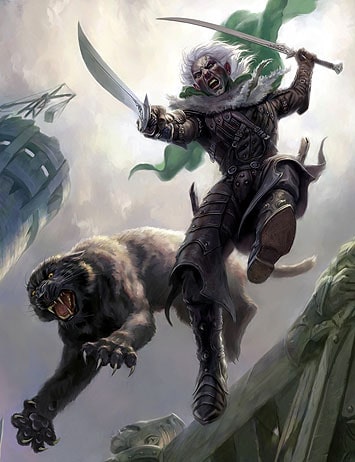The Ranger Beastmaster in 5e, considered by many to be the worse subclass in D&D. The reasoning for their terrible reputation is often argued due to the low survivability of their companion and heavy use of action economy in the subclass. Because of this common trend, I decided to take a look into their subclass and see how strong or weak each of their abilities are.
The conclusion, the ranger beastmaster in 5e starts to comes online Early Mid-Game and gets a color rating of blue. They can definitely provide crowd control and utility to help in many situations, but the action economy, survivability, and damage output through your companion is lower than many of the other subclasses out there. That said, there are still plenty of uses that can come from the 5e ranger beastmaster subclass to enjoy. So, be sure to continue reading to see some ways to make an effective beastmaster.
How Am I Evaluating The 5e Beast Master Ranger Abilities?
Now, before we begin the review, we should go over what I am rating and how I get my decision. There are three things that I am looking over in the in-depth review. I look over how strong the subclass is in combat, how much utility it has, and, if applicable, the roleplay ability. This way everyone’s playstyle can be shown to fit their needs.
Now, when deciding if something is good for a guide, I look at what the subclass is trying to accomplish. Then look at how successful it succeeds in that task. For instance, in a previous article on the Forge Cleric, I concluded it attempts to make you a competitive front line spellcaster. I then figure out how well that ability succeeds in letting you front line, as well as how soon it comes online.
If it is accomplished at level 3 then it is early game. Level 7 it is Early-Mid, Level 11 Late-Mid, and Level 15 is Late Game. I rate earlier tiers better as most Dungeon and Dragons Campaigns do not go beyond level 8. Without further a due, let start this review on the 5e Ranger Beastmaster.
Color Coding: Meaning
For a subclass review, I use a color-coding system to summarize each ability. It stands out and makes it easy to remember for many. That said, for you to understand it, you need to understand what the colors mean. As such, here is what they mean!
GOLD- “That’s gold Jerry! Gold!” If an ability is highlighted gold, then this means that this ability not only is what defines your subclasses but accomplishes it better than almost any other subclass. I rarely do Gold ratings, so definitely pay attention to them if you see me do it.
Sky Blue –If the ability is sky blue, it means that this ability is a defining trait in your subclass but for one reason or another is not game-breaking like gold.
Blue- If it is just blue, then it’s a good ability but there are plenty of other abilities that perform better. Still better to have in a subclass than other colors.
Black. Black is ok. These are your more niche abilities that have bonuses in some situations but not useful in others.
Purple – Purple is for very niche abilities. They have times when they are good, but these are rare and almost never come up. Not the best color to see for an ability.
Red- Red is dead. It is the worse color to see on an ability. That said, no matter the color, an ability can work so don’t ignore a subclass if they have a red. Enough imagination and can-do attitude will make it okay but not optimal.
Well, with that cleared up, let’s begin the review.
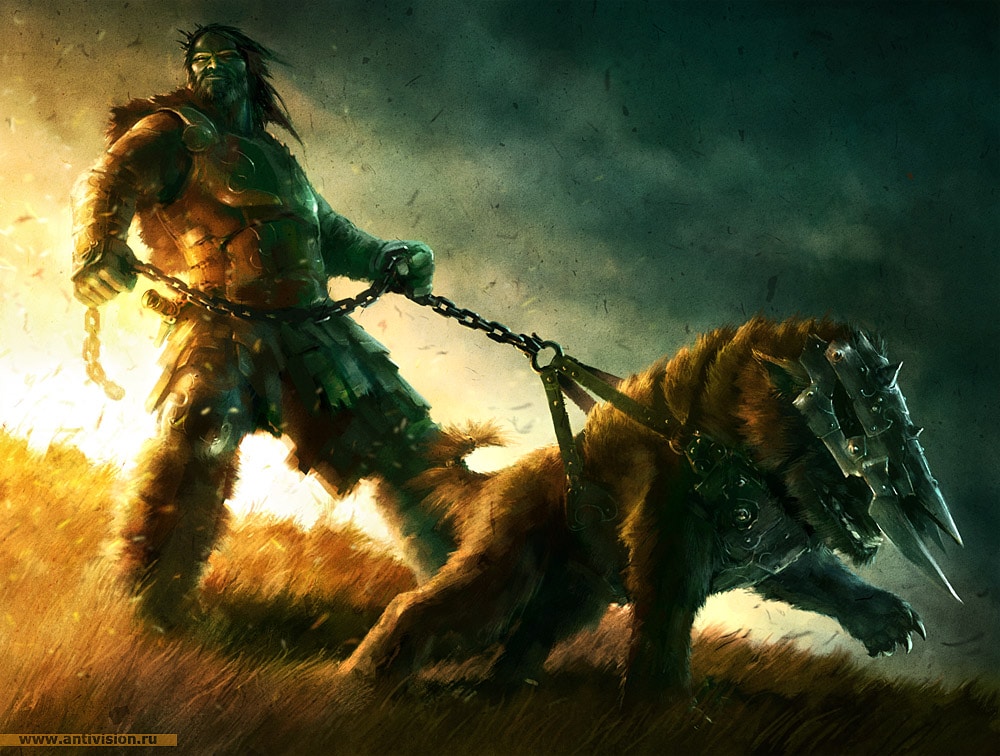
5e Beastmaster Rangers Companion
The Rangers Companion is the defining feature for the ranger’s beastmaster 5e subclass. Because of this, every ability after centers around this ability to make it optimal as time goes on. The level 3 benefit though, goes as follows:
At 3rd level, you gain a beast companion that accompanies you on your adventures and is trained to fight alongside you. Choose a beast that is no larger than Medium and that has a challenge rating of 1/4 or lower
Add your proficiency bonus to the beast’s AC, attack rolls, and damage rolls, as well as to any saving throws and skills it is proficient in. Its hit point maximum equals its normal maximum or four times your ranger level, whichever is higher. The beast obeys your commands as best as it can. It takes its turn on your initiative, though it doesn’t take an action unless you command it to. On your turn, you can verbally command the beast where to move (no action required by you). You can also use your action to verbally command it to take the Attack, Dash, Disengage, Dodge, or Help action.
Once you have the Extra Attack feature, you can make one weapon attack yourself when you command the beast to take the Attack action. While traveling through your favored terrain with only the beast, you can move stealthily at a normal pace.
If the beast dies, you can obtain another one by spending 8 hours magically bonding with another beast that isn’t hostile to you, either the same type of beast as before or a different one
Rangers Companion Utility Review
On first notice, the animal companion is weak, action-heavy, and is not that strong. Which in fact, it is definitely not the strongest beginning subclass, only earning a blue rating for it. In fact, if I was to go by just combat, the 5e ranger beastmaster, would receive a purple rating in all honesty. However, there are a few notable traits that make this better than first glance.
The first notable trait is the utility. Now, I have done numerous reviews and guides on familiars and their resources. Which, while not tied to the spell find familiar is effectively a beefed-up familiar filled with options. So, when taking a look at the companion list, to help generate ideas for what kind you are looking for, I suggest reading this wizard familiar guide that goes overuses and break downs stats that you can usually see for most beast companions as well.
It should be noted, that your companion choice is rather permanent, only broken upon their death. So, unlike find familiar in being able to switch between animals yours is a bond between a living animal and not a spirit. Therefore, be careful with your first pick. I also suggest reviewing this guide to help identify which one you want.
Now the utility behind this subclass comes from the fact that your companion can accomplish everything a familiar can, if not even more. The reason for this comes from the expansive list of companions that can better suit your playstyle. That’s the reason why many chose flying companions and play small races. That way, they fly around without needing magic items. It grants them massive utility. Thanks to options like this, the subclass has a much higher utility than in comparison for combat.
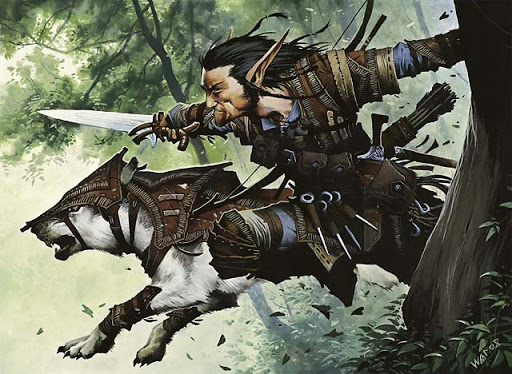
Rangers Companion Roleplay Review
The ranger beastmaster 5e subclass does not only have higher utility than most subclasses, but also strong roleplay. Now every class and subclass if filled with roleplay potential. In fact, that’s the reason there is a warlock guide going over the general bits of roleplay and character creation. That said, the beastmaster subclass is exceptional for roleplay potential.
Now roleplay is not something I can just state as facts, your roleplay is different than mine and yours is different than other players. It’s part of the charm of the game. Because of this, I will try to point out some roleplay uses I see out of the class to get your creative juices thinking.
The first roleplay use I can think of is, “What is your companion’s bond to you?” Did you save them from starvation when you slew the mother in self-defense? Noticing a crying infant that would surely die without your care or warmth.
Perhaps, it was a pet given to you by your late master. They always were filled with a rather peculiar sense of humor by gifting you a rare animal like this. Or, piggybacking off the idea, what If the day your master died, a wolf or some other animal came up to you and started to follow you around. Almost like your master’s spirit lives on through your animal.
The opportunities are as limited as your imagination by allowing a secondary party member to be created that can tie directly to any backstory you create.
Rangers Companion Combat Review
Next, comes for what the subclass was designed for, combat. As mentioned before, even if designed like that, the 5e ranger beastmaster subclass is in no way or shape most effective this way. Therefore, my personal opinion is to focus and plan for utility and roleplay with the subclass. But combat is huge and as such I will go over in detail their power and ways to use them in combat to make them as optimal as can be.
The first thing to note is their health and scaling. Even if choosing one of the most optimal companions, being a giant poisonous snake. If we follow along with this chart that goes over expected stats for a monster by CR rating. We can expect that our companion will have an AC of 17, hit points of 20, and a to-hit of +7 when a party of four reach level 5. At this point, this kind of party would fight a CR level of 7 monsters rather frequently. Meaning, they have a 45% chance of hitting your familiar and would kill it with half of its actions. Meanwhile, your companion would have a 60% chance to hit and take out hopefully 19 of 168 hit points but uses up one of your attacks. Not a great conversion when they could be permanently killed in one hit.
Therefore, my suggestion is positioning. With an average 70% chance to hit place them beside allies or block your enemy from moving unless they want to risk an opportunity attack. This way, you can proc advantage or help control the mobility of the enemies.
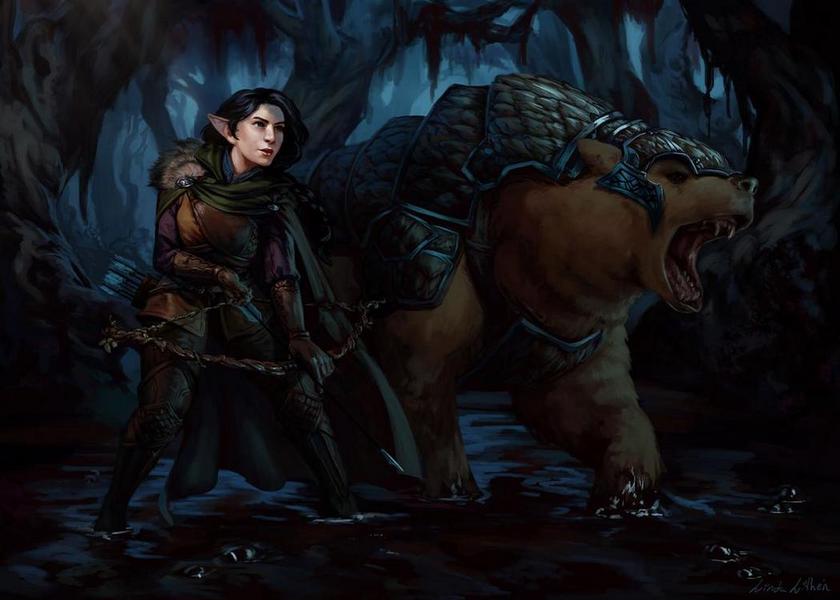
Exceptional Training
Beginning at 7th level, on any of your turns when your beast companion doesn’t attack, you can use a bonus action to command the beast to take the Dash, Disengage, Dodge, or Help action on its turn.
Where the companion starts to gain some effective combat range. Now, one thing to note is the ranger is a heavy bonus action user. In fact, almost every spell available to the ranger is a bonus action. This creates a heavy bonus action economy as you now need to choose between spell casting or your companion. If you are like most rangers, you will use hunters mark first round, and since it uses up your concentration, you won’t be able to cast any other spells as most use concentration. As such, your companion allows you uses of your bonus action when concentrating on a spell.
This allows for a few new options available for the ranger beastmaster in 5e. The most noticeable one is taking the help action. The help action is extremely effective for gaining advantage for a key damage dealer. Thus, helping to ensure damage is done against those you wish to destroy.
This said dm’s do not like consistent ways of giving someone advantage. Just look at the graveyard of dead familiars to see that. So, my recommendation would be to use your animal companion to assist against minions. This way you can make quick work of the minions that your boss controls so your party and gang up on the boss. While also positioning your companion to prevent minions from going after the range attackers. Another added benefit of targeting minion is it increases survivability for your companion.
So, to summarize, the ability “Exceptional Training” is great for assisting allies while also remaining a field presence to control the enemy’s mobility.

Bestial Fury
Starting at 11th level, your beast companion can make two attacks when you command it to use the Attack action.
More attacks mean more damage more consistently. But this happens at level 11. At this point, a fighter gains three attacks. The rogue does 6d6 sneak attack damage. While the Druid can cast spells that do 6d8 damage every turn. It’s not that great. Especially if you are using your companion for utility and field control.
Now that said, this does get more optimal at level 15 with the ability shared spell increasing your DPS by roughly an additional 7 points but does little else.
So not a lot to say on this actually. It’s okay overall, but not great synergy with the best way to use your companion. Granting more damage your companion can do, but also draws attention to him making easy prey to be killed. Up to you if you would rather grant that paladin with smite abilities advantage and you attack twice or have your companion attack twice and you attack once.
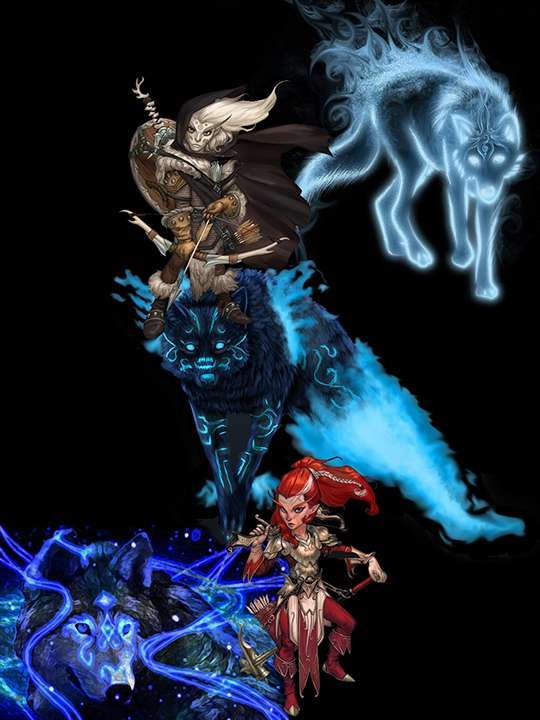
5e Beastmaster Ranger: Share Spells
Beginning at 15th level, when you cast a spell targeting yourself, you can also affect your beast companion with the spell if the beast is within 30 feet of you.
I give you the epitome of the class. Now, I will be the first to admit, I love utility. And there is nothing filled with more utility than spells. So, sharing spells with your companion can be extremely useful. While maybe not flashy or all powerful like many subclasses’ capstone ability. This can still provide some good uses for the beastmaster ranger for 5e.
Let me get your brain thinking about some of these spells. Pass without a trace is the biggest level 2 ranger spell use. It also targets self upon casting. Therefore, you can extend your range of pass without a trace by keeping your companion 30 feet away from you effectively doubling the range of the spell allowing your party to stealth further apart.
Then, my favorite use of this ability comes from the spell Guardian of Nature. It is filled with a ton of nasty benefits that can either increase your combat ability or control the field. This now allows you to have two targets of yourself and your companion. Allowing you to double the effectiveness of your spells.
As you can see, gaining a second target on self-spells is huge. While not the most obvious ability, it grants a large amount of utility and combat for your ranger and companion. It just, unfortunately, takes a long time to get to.
Beastmaster Ranger 5e Conclusion
Personally, I feel the 5e Ranger Beastmaster subclasses is great for utility, however, their weakness lies in not seizing upon that strength, but rather focusing on combat abilities more. Causing an attempt to build upon a base that is not what the subclass is actually good for. This can be seen with the ability “Exceptional Training” and “Bestial Fury”. As a result, it becomes a suboptimal subclass in comparison to many other classes out there.
That said, with the right mindset, someone can make use of this subclass, just maybe not in the way most think about using it. So, if you are sold about playing the 5e’s ranger beastmaster. I find this detailed ranger class review to be incredibly useful for creating your character going from race to spells. It’s really good! But if you are interested in playing something filled with a ton of utility and roleplay from an early level and (in my opinion) is more optimal.
Play a warlock and choose the pact of the chain at level 3. It gives you spells, a rather powerful companion, and its not even their subclass but an additional choice they get. It also shows you why the 5e ranger beastmaster falls behind in comparison to other classes. Check out this article on the pact of the chain familiars if you are interested to see what companions they get and why they are so strong. Well with that said hope you have a fantastic day and have fun with your new character!
- P.S. If you enjoyed this post and want to analyze your own spells, monsters, and party, download my D&D calculator! It’s a tool I use to calculate true DPR for spells and monsters in my campaigns. If you are still unsure by my little blurb then check out the review I made and see all the nifty abilities it has!

